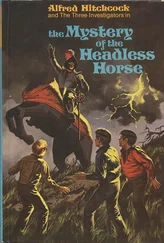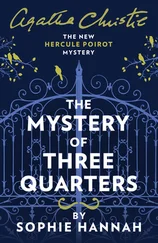1 ...7 8 9 11 12 13 ...19 Lucy’s novel method of locomotionwould be confirmed soon after with the discovery of an amazing series of three sets of footprints left behind in the volcanic ash of the Laetoli region of northern Tanzania three and a half million years ago, that provide a most moving insight into the human relationships of those distant ancestors.
‘The footprint records a normal positioningof the left and right feet with human-like big toes,’ writes British neurologist John Eccles.
The special feature is that one individual followed the other, placing its feet accurately in the preceding footsteps. The third was smaller and walked closely to the left following the slightly wavy walk of the larger. We can interpret this as showing that two of the group [mother and child?] walked together holding hands, while another [sibling?] followed accurately placing its feet into the footsteps of the leader. We are given a privileged view of a family taking a walk on the newly formed volcanic ash 3.6 million years ago, just as we might do on soft sand left by the receding tide!
Ten years later, in 1984, near the ancient Lake Turkana in Kenya, the famous palaeontologist Richard Leakey discovered a further near-complete skeleton, ‘Turkana Boy’, an adolescent of the species Homo erectus from around 1.6 million years ago, with a skull intermediate in size between Lucy and ourselves – reflecting that second unique evolutionary characteristic of the human species, his prodigiously enlarging brain.
Turkana Boy’s ‘people’, Homo erectus, were the first to make tools, reflecting that manual dexterity which is a further unique attribute of humans, made possible by the seemingly trivial evolutionary advantage of lengthening the thumb by an extra inch to make it ‘opposable’, allowing it to ‘speak to’ the other four digits.
‘In man the most precise functionthat the hand is capable of is to place the tip of the thumb in opposition to the tip of the index finger, so they make maximum contact,’ writes the British anatomist John Napier. ‘In this position small objects can be manipulated with an unlimited potential for fine pressure adjustments or minute directional corrections. This is the hallmark of mankind. No non-human primate can replicate it.
This extra inch of the human thumbtransforms the grasping power of the hand of our primate cousins into the vast repertoire of the gripping precision of the human hand that would, eventually, allow man to paint and sculpt and record, through the written word, his experiences, without which his history would have disappeared completely into the dark abyss of time.
We cannot know precisely how or why the enlarging brain of Homo erectus released the hand’s (till then, hidden) potential of both grasping and gripping, but we can see its consequences readily enough in his stone tools. Palaeontologists who have taught themselves the technique of stone napping (as it is known) discovered that the necessary skill lies in finding the right-shaped ‘core’ stone, which is then percussed by a hammer stone at precisely the right angle and with a controlled degree of force so as to produce fragments of the right size and sharp enough to cut open the skin of his prey.
There is something immensely moving about the diminutive Lucy, no more than five feet tall, and the strapping Turkana Boy. Their bones may be silent, but nonetheless they speak to us across those aeons of time. What, one wonders, when they looked upwards at that clear African sky at night, did they make of its thousands of shimmering stars and the drama of the waxing and waning of the moon?
It is impossible to exaggerate the importance of those skeletal remains to our understanding of evolutionary heritage, confirming the linear sequence of our predecessors just as Darwin had postulated. Five million years ago the antecedents of Lucy and her tribe forsook the safety of the forest to walk upright on the savannah of central Africa. Two million years passed, and the ever-expanding brain of Homo erectus allowed for the incremental increase in intelligence necessary to fashion tools from stone, and to undertake those extraordinary migrations of tens of thousands of miles that would take him through what is now the Middle East into Asia, and as far as northern China and Indonesia. Then a further million and a half years elapsed before the emergence of Homo sapiens, who from his base in Africa would undertake a second great wave of global migration, this time as far as Australia, across the Bering Straits to America, and up into Europe and the southern Pyrenees, where Cromagnon man would found the first human civilisation.
Thanks to Donald Johanson, Richard Leakey and many others, we now possess the factual evidence for man’s evolutionary ascent, culminating in those images of deer and bison on the ceiling of that Altamira cave whose technical virtuosity so astonished the Marquis de Sautola. There is no deep mystery about our origins. The massively overwhelming prevailing view taught in virtually every school and university in the Western world insists that Darwin’s evolutionary theory of natural selection explains us and our ancestors. ‘Our own existence[that] once presented the greatest of all mysteries is a mystery no longer. Darwin solved it,’ observes the evolutionary biologist Richard Dawkins. ‘We no longer have to resort to superstition … it is absolutely safe to say that anyone who claims not to believe in evolution is ignorant, stupid or insane.’ And how could it not be so? What other conceivable explanation might there be? There is none. That, one would think, should be the end of the matter.
And yet, the more that time has passed since those definitive discoveries of Lucy and Turkana Boy, the more perplexing that evolutionary trajectory seems to be. The Ascent of Man captured in Thomas Huxley’s famous image is no longer a theoretical idea: it is concretely realised in Lucy’s sharp-angled femur and Turkana Boy’s much larger skull; but the more one reflects on what is involved in standing upright or acquiring a larger brain, the less convincing Darwin’s proposed mechanism of natural selection appears to be. Further, the suddenness of the cultural explosion that signalled the arrival of Cromagnon man argues against a progressive, gradualist evolutionary transformation. It suggests rather some dramatic event – as if a switch were thrown, the curtain rose, and there was man at the centre of the stage of world events. The findings of the New Genetics and the Decade of the Brain make it much more difficult to set such doubts aside. The trivial genetic differences that separate our primate cousins from ourselves seem quite insufficient to account for those physical differences that set us apart. Similarly, the elusive workings of the human brain would seem to defy any simple evolutionary explanation.
THE RIDDLE OF ‘THE ASCENT’
Part 1: Setting Out
There are at least half a dozen speculative evolutionary reasons for why Lucy and her kind might have wished to stand upright, and the advantage in doing so: the better to see potential predators, to carry her dependent offspring, or, as Darwin himself supposed, ‘standing on two legs would permit an ape-like predecessor to brace itself by holding on to a branch with one arm as he grabbed the fruit with another’. But the most schematic anatomical comparisonwith our primate cousins reveals the prodigious difficulties of this novel form of locomotion. The knuckle-walking chimp has four powerful, pillar-like limbs, providing a large rectangular basis of support, with the centre of gravity solidly located in the middle of the torso. For Lucy, the centre of gravity shifts to a small area enclosed by her two feet, and with the bulk of her weight (her head and torso) in the upper part of the body, exacerbating her tendency to topple over. While the chimpanzee might be compared to a solid, four-legged table, Lucy’s upright frame, like an unsupported pole balancing a heavy ball (her head), must constantly defy the laws of gravity.
Читать дальше












